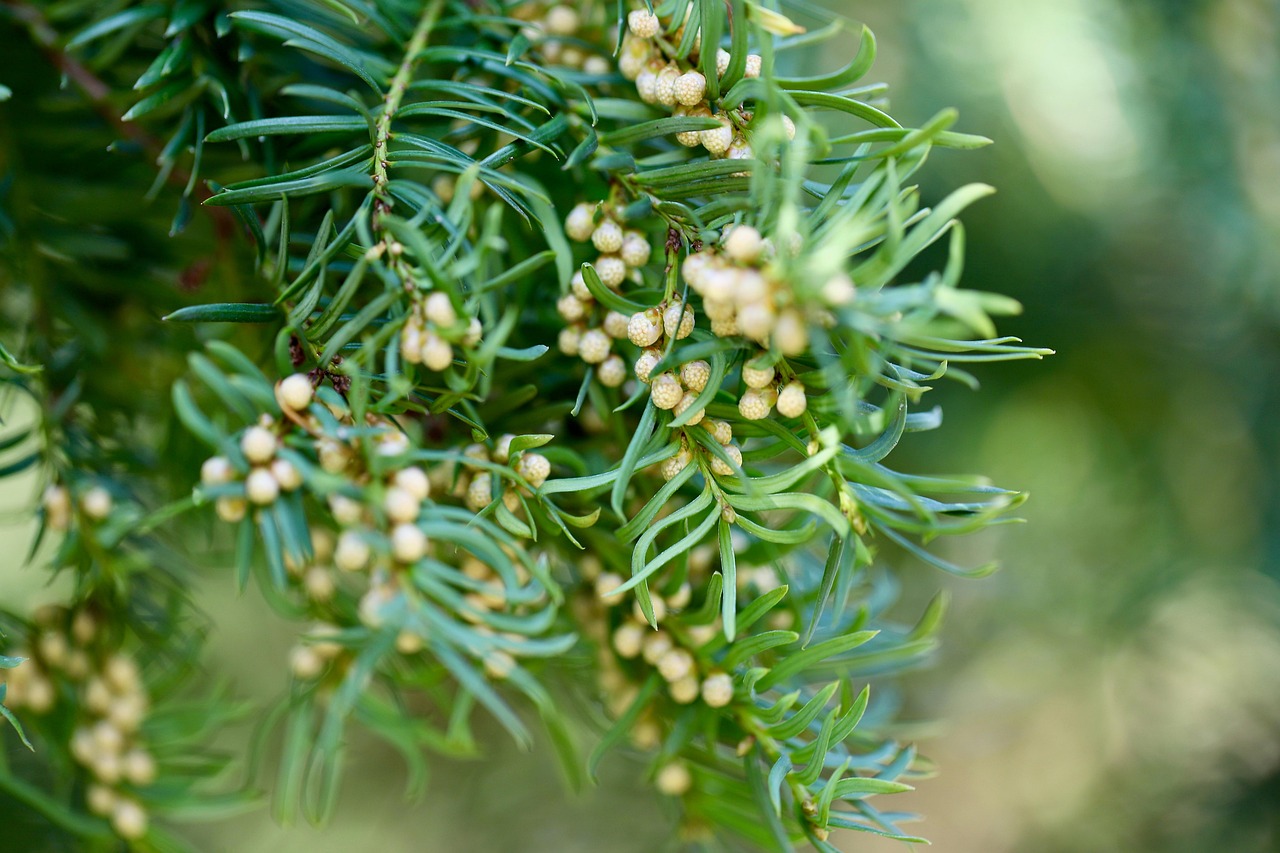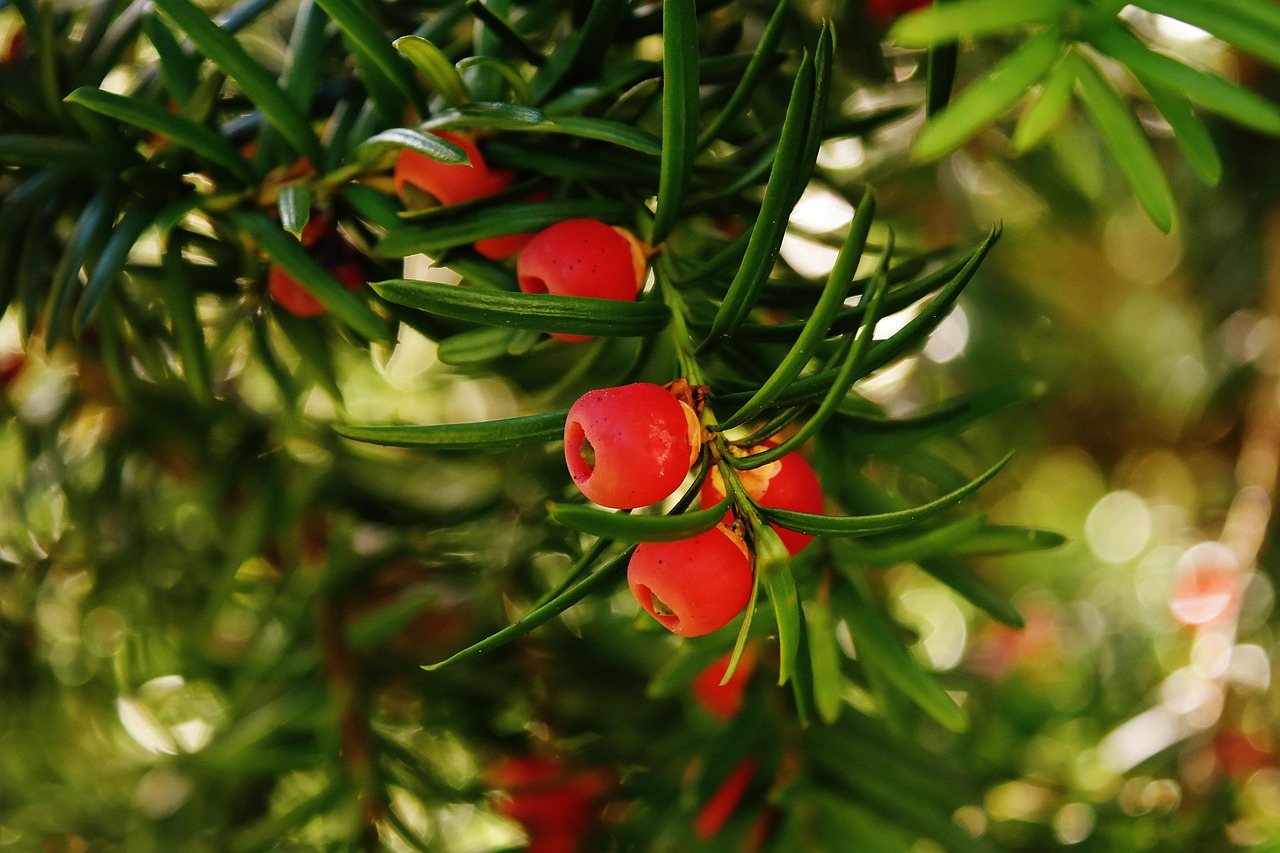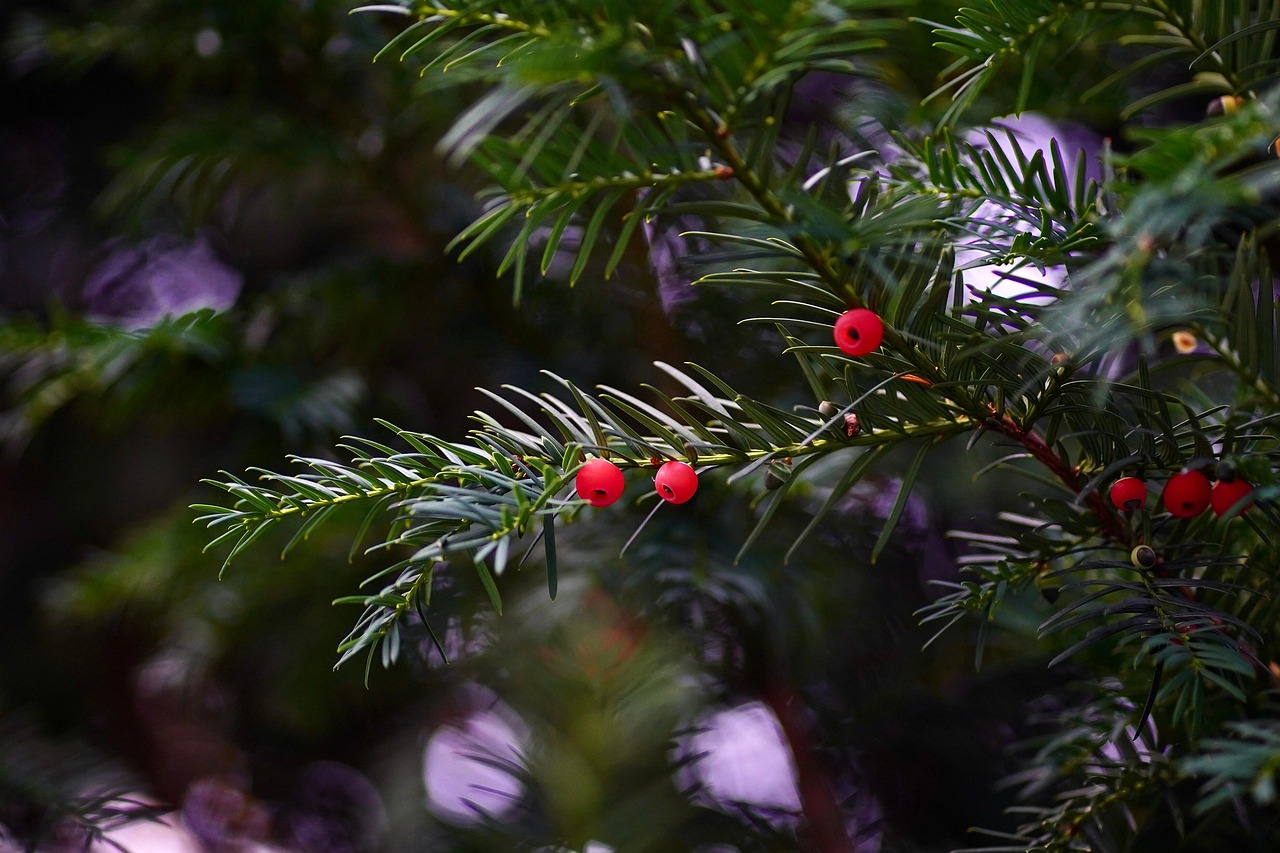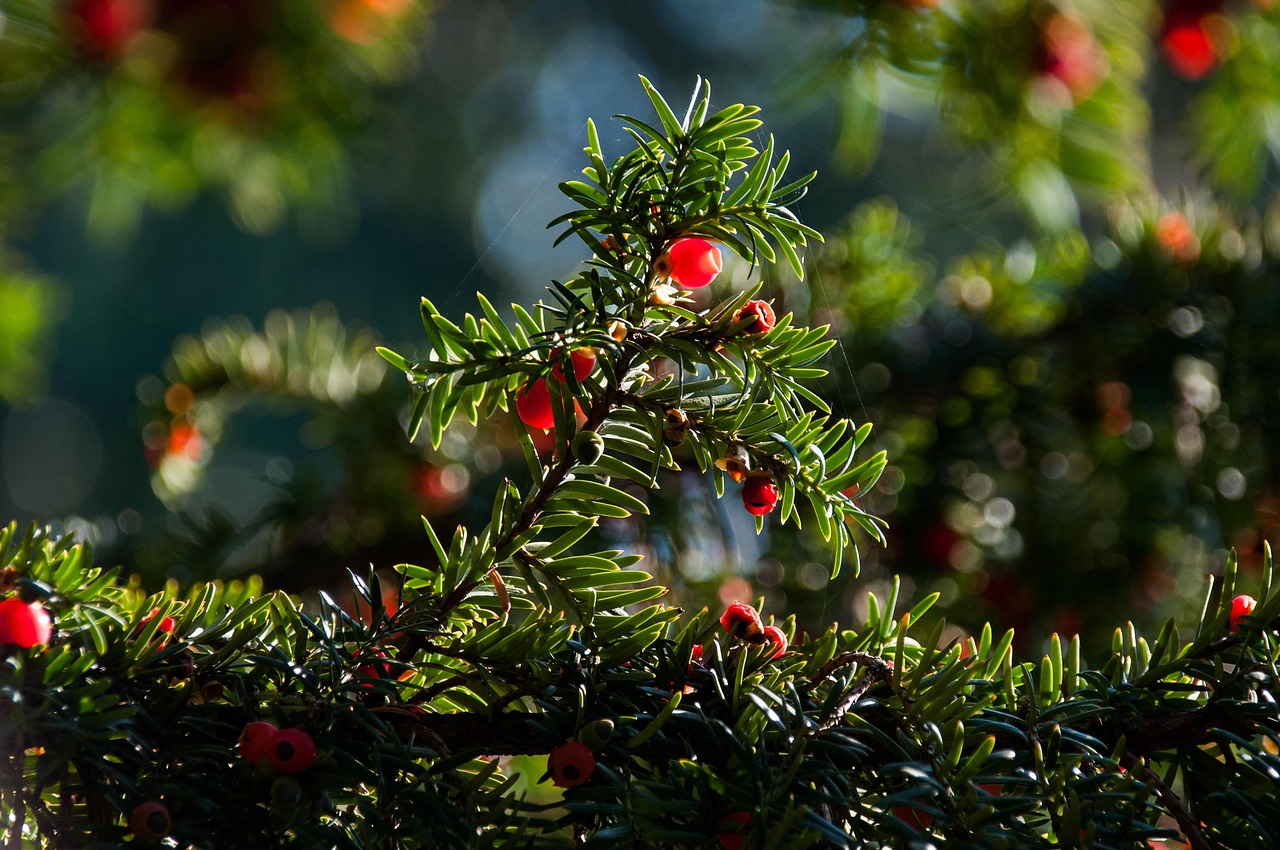The yew tree (Taxus baccata) typically grows at a slow to moderate rate of about 12 to 24 inches per year, making it an excellent choice for classic garden hedges. Its dense foliage and ability to tolerate pruning allow for versatile hedge shapes and sizes.
Yew trees have long been favored in gardens for their aesthetic appeal and practicality. Their deep green foliage provides year-round interest, while their ability to grow in various soil types and conditions enhances their popularity. Yew trees can be shaped into formal hedges or left to grow naturally, adding elegance to any landscape.

The yew tree’s growth rate can depend on several factors, including soil quality, sunlight, and climate. Understanding these aspects is vital for gardeners looking to cultivate healthy yew hedges. Below are some key characteristics of yew trees that contribute to their growth patterns:
| Characteristic | Description |
|---|---|
| Growth Rate | 12 to 24 inches per year |
| Height | Can reach up to 20 feet or more |
| Width | Typically 5 to 10 feet wide when fully grown |
| Sunlight | Thrives in full sun to partial shade |
| Soil Type | Prefers well-drained, slightly acidic soil |
| Water Needs | Moderate; requires regular watering during dry spells |
Growing Conditions for Yew Trees
To achieve optimal growth rates for yew trees, gardeners should consider the conditions in which they plant them. Here are some essential factors to keep in mind:
- Soil Quality: Well-drained soil is crucial for yew trees. Amend the soil with organic matter to improve drainage and fertility.
- Lighting: Yews prefer full sun but can adapt to partial shade. However, too much shade can slow their growth.
- Watering: Regular watering is necessary, especially during dry periods. Ensure the soil remains moist but not waterlogged.
- Fertilization: A balanced fertilizer in early spring can promote healthy growth. Avoid over-fertilizing, as this can lead to excessive foliage at the expense of root development.
The yew tree’s resilience allows it to thrive in challenging conditions. It can withstand drought once established and is also tolerant of urban pollution. This adaptability makes it a favorite choice among landscapers and gardeners alike.

Pruning for Optimal Growth
Regular pruning is essential for maintaining yew hedges. Proper pruning encourages dense growth and helps shape the hedge according to your landscape design. The best time to prune yews is in late winter or early spring before new growth begins.
When pruning, consider the following tips:
- Timing: Prune during dormancy to minimize stress on the plant.
- Tools: Use sharp shears or loppers to make clean cuts.
- Technique: Trim back only one-third of the previous year’s growth to promote bushiness without damaging the plant.
By following these guidelines, gardeners can help ensure that their yew hedges grow vigorously and maintain their classic look. With patience and care, yew trees can thrive, providing beauty and privacy for years to come.

Cultural Significance of Yew Trees
The yew tree has a rich historical significance in various cultures. In ancient times, it was often associated with immortality due to its long lifespan. Today, it remains a symbol of strength and endurance in many landscapes.
In addition to their decorative uses, yews have practical applications. The wood from yew trees is highly valued for its strength and flexibility, making it ideal for crafting bows and furniture. Furthermore, the tree plays a role in traditional medicine, with extracts used for various health purposes.
In summary, the yew tree’s growth rate, adaptability, and cultural significance make it an ideal choice for classic garden hedges. By providing the right conditions and care, gardeners can enjoy the benefits of this remarkable tree in their landscapes.
Varieties of Yew Trees for Hedges
When selecting yew trees for hedging, understanding the various species and cultivars available can enhance your gardening experience. Different varieties offer unique characteristics that can suit specific garden styles and requirements. Below are some commonly used yew tree varieties ideal for classic hedges:

- Taxus baccata: Commonly known as the European Yew, this species is the most widely used for hedges. It has a dense, bushy growth habit and dark green foliage.
- Taxus x media: This hybrid yew is a cross between the English and Japanese yew. It features a more compact growth and is tolerant of varying light conditions.
- Taxus cuspidata: Also known as the Japanese Yew, this variety is known for its hardiness and ability to withstand colder climates. It has a more upright growth habit.
- Taxus baccata ‘Fastigiata’: This cultivar, often referred to as the Upright Yew, has a columnar shape, making it an excellent choice for narrow spaces.
Each of these varieties has its own unique growth characteristics and care requirements. Evaluating your garden’s needs will help you choose the best yew for your hedge.
Planting Yew Trees for Hedges
Proper planting techniques are crucial for establishing healthy yew hedges. Consider the following steps to ensure successful growth:
- Choose the Right Location: Select a spot with well-draining soil and adequate sunlight. While yews tolerate shade, they thrive in full sun.
- Prepare the Soil: Amend the soil with organic matter to improve drainage and nutrient content. A pH level between 6.0 and 7.0 is ideal.
- Dig the Hole: Create a hole that is twice as wide as the root ball but no deeper than the root ball itself. This promotes healthy root development.
- Position the Plant: Place the yew tree in the center of the hole. Ensure that the top of the root ball is level with the surrounding soil.
- Backfill and Water: Fill in around the roots with soil and water thoroughly to eliminate air pockets. Mulch around the base to retain moisture.
Following these steps will help ensure that your yew trees establish quickly and begin to grow effectively.
Caring for Yew Hedges
Caring for yew hedges involves regular maintenance to promote healthy growth and aesthetic appeal. Here are some essential care practices:
- Watering: During the first few years after planting, regular watering is crucial. After establishment, yews are relatively drought-tolerant but will benefit from supplemental watering during prolonged dry spells.
- Fertilizing: Apply a balanced fertilizer in early spring to encourage robust growth. Avoid over-fertilizing, as this can lead to weak branches.
- Pest Control: Monitor for common pests such as scale and aphids. Use appropriate organic pesticides if infestations occur.
- Disease Management: Yews can be susceptible to fungal diseases. Ensure good air circulation and avoid overhead watering to minimize risks.
Common Issues and Solutions
Even with proper care, yew hedges can encounter problems. Below are some common issues you may face along with suggested solutions:
| Issue | Description | Solution |
|---|---|---|
| Browning Foliage | Leaves turning brown can indicate drought stress or disease. | Check soil moisture levels and consider watering deeply. Remove affected branches. |
| Pests | Aphids or spider mites may infest yews, leading to stunted growth. | Use insecticidal soap or neem oil to treat infestations. |
| Wilting | Wilting leaves may suggest root rot from overwatering. | Avoid watering until the soil dries out; ensure proper drainage. |
| Nutrient Deficiency | Pale foliage may indicate insufficient nutrients. | Apply a balanced fertilizer to improve nutrient levels. |
By addressing these common issues promptly, you can maintain healthy yew hedges that flourish in your garden landscape.
The Role of Yew Trees in Ecosystems
Yew trees play a significant role in local ecosystems. They provide habitat for various wildlife, including birds and insects. The dense foliage offers protection from predators while also serving as a source of food.
The berries produced by female yews are attractive to birds, which helps in seed dispersal. Additionally, yews can absorb carbon dioxide efficiently, contributing to better air quality in urban environments.
In conclusion, understanding the varieties, planting techniques, care practices, and ecological benefits of yew trees enhances their value in gardens. With thoughtful cultivation, yew hedges can offer beauty and sustainability for generations to come.
Complementary Plants for Yew Hedges
When designing a garden with yew hedges, it is beneficial to consider complementary plants that enhance the overall aesthetic and ecological balance. Choosing the right companion plants can improve biodiversity and create a more vibrant landscape. Below are some excellent options to pair with yew trees:
- Boxwood (Buxus): This evergreen shrub provides a classic look and pairs well with yews. Its dense foliage and ability to be shaped make it ideal for formal gardens.
- Holly (Ilex): The glossy leaves and bright red berries of holly add visual interest, especially in winter. It also attracts birds, enhancing the garden’s ecological value.
- Ferns: Various ferns can thrive in the shade provided by yew trees. They add texture and softness to the landscape.
- Lavender (Lavandula): This fragrant plant thrives in sunny spots and attracts pollinators. Its aromatic qualities can enhance the sensory experience of the garden.
By incorporating these plants into your landscape, you can create a harmonious environment that showcases the beauty of yew hedges while supporting local wildlife.
Landscaping Ideas with Yew Hedges
Yew hedges offer versatility in landscape design. Their ability to be shaped and maintained allows for a variety of creative landscaping ideas. Here are some popular ways to integrate yew hedges into your garden:
- Formal Hedges: Create symmetrical shapes with yew hedges for a classic, formal garden aesthetic. Use yews as borders along pathways or around flower beds.
- Privacy Screens: Plant yew hedges in staggered rows to form a tall, dense privacy screen. This provides a natural barrier from neighbors or street traffic.
- Topiary Shapes: Utilize the yew’s ability to be pruned into various forms, such as spheres or cones, to add interest and whimsy to your garden.
- Accent Plants: Use yew hedges as backdrops for colorful flower beds, allowing the rich green color of the yew to enhance the vibrancy of blooming plants.
These landscaping ideas can help maximize the potential of yew hedges while creating visually appealing spaces in your garden.
The Economic Value of Yew Trees
The economic significance of yew trees extends beyond their ornamental uses. They have various practical applications that can benefit both gardeners and businesses. Here are some key economic aspects to consider:
- Lumber Production: Yew wood is highly sought after for its durability and attractive grain. It is often used in high-quality furniture, cabinetry, and bow making.
- Medicinal Uses: The taxanes found in yew trees have led to significant developments in cancer treatment. The pharmaceutical industry values yews for their potential medicinal properties.
- Landscaping Services: Yew hedges are a popular choice among landscape professionals, contributing to the demand for skilled labor in garden design and maintenance.
- Ecotourism: Gardens featuring yew trees can attract visitors interested in botany and landscaping, promoting local tourism and economic growth.
Understanding the economic value of yew trees can encourage sustainable practices and promote their cultivation in gardens and landscapes.
Caring for Aging Yew Trees
As yew trees mature, they may require specific care to maintain their health and appearance. Older yews can face unique challenges that necessitate special attention:
- Regular Inspection: Check for signs of disease or pest infestations that can become more prevalent as trees age. Prompt action can prevent further damage.
- Selective Pruning: Remove dead or diseased branches to improve air circulation and light penetration. This practice supports healthier growth.
- Soil Health: Over time, soil quality can diminish. Test soil regularly and amend as necessary to maintain nutrient levels.
- Water Management: Older trees may need adjusted watering practices, particularly during dry periods. Ensure they receive adequate moisture without becoming waterlogged.
Caring for aging yews is essential for prolonging their lifespan and keeping them vibrant in your garden.
The Role of Yews in Traditional Gardens
Yews have been a staple in traditional gardens for centuries, known for their beauty and versatility. Their historical significance contributes to their ongoing popularity in modern gardening:
- Cultural Heritage: Many traditional gardens feature yews due to their longevity and ability to symbolize strength and resilience.
- Historical Use: In ancient times, yews were planted in churchyards and cemeteries as symbols of eternal life, reinforcing their cultural importance.
- Aesthetic Appeal: Yews contribute to the classic elegance of formal gardens, often seen in European landscapes.
The enduring appeal of yew trees reflects their vital role in gardening history and their continued use in contemporary designs.
Innovative Uses of Yew Trees in Modern Landscaping
In addition to their traditional roles, yew trees are being embraced in modern landscaping for their versatility and unique characteristics. Gardeners and landscape designers are finding innovative ways to incorporate yews into various settings:
- Urban Gardens: Due to their adaptability, yews are excellent choices for urban gardens where space is limited. Their ability to thrive in less-than-ideal conditions makes them suitable for city environments.
- Contemporary Designs: Yews can be shaped into geometric forms, making them ideal for modern landscape designs that emphasize clean lines and structure.
- Low-Maintenance Landscapes: Once established, yew hedges require minimal care, making them perfect for low-maintenance gardens that still offer visual appeal.
- Wildlife-Friendly Spaces: Incorporating yews into gardens can attract beneficial wildlife, such as birds and pollinators, fostering a healthy ecosystem.
These contemporary uses highlight the ongoing relevance of yew trees in creating functional and beautiful landscapes that meet the demands of modern living.
Challenges of Growing Yew Trees
While yew trees offer many benefits, there are challenges associated with their cultivation. Understanding these potential issues can help gardeners better prepare for successful growth:
- Pest Management: Yews can be susceptible to pests such as spider mites and scale insects. Regular monitoring and appropriate treatments are essential to protect the health of the trees.
- Disease Risks: Fungal diseases like root rot can affect yew trees, especially when planted in poorly draining soil. Ensuring proper drainage is crucial in preventing these issues.
- Pruning Requirements: Regular pruning is necessary to maintain the desired shape and health of yew hedges. Without proper maintenance, they can become overgrown and lose their aesthetic appeal.
- Slow Growth Rate: Yews have a slow to moderate growth rate, which may require patience from gardeners who wish to establish a mature hedge quickly.
Being aware of these challenges allows gardeners to take proactive steps in managing their yew trees effectively.
Environmental Impact of Yew Trees
The environmental impact of yew trees extends beyond their beauty in gardens. They play a crucial role in maintaining ecological balance:
- Carbon Sequestration: Yews effectively absorb carbon dioxide from the atmosphere, contributing to climate change mitigation efforts.
- Soil Stabilization: The extensive root systems of yew trees help prevent soil erosion, especially on slopes and banks.
- Biodiversity Support: By providing habitat and food sources for wildlife, yews contribute to the maintenance of biodiversity in garden ecosystems.
The ecological benefits of yew trees make them an important choice for environmentally conscious gardeners.
Conclusion
The yew tree stands as a remarkable option for classic garden hedges due to its unique growth characteristics, aesthetic appeal, and historical significance. Understanding its growth rate, cultural heritage, and ecological contributions enhances our appreciation for this versatile plant. From traditional gardens to modern landscapes, yews offer options that enrich our outdoor spaces.
Through comprehensive care practices—ranging from proper planting techniques to regular maintenance—gardeners can cultivate robust yew hedges that not only provide beauty but also support local ecosystems. As we continue to innovate in landscaping, yew trees will undoubtedly remain a cherished component of our gardens, symbolizing strength and resilience for generations to come.
By embracing the potential of yew trees and understanding their needs, we can create stunning landscapes that reflect both our love for nature and our commitment to preserving it.
